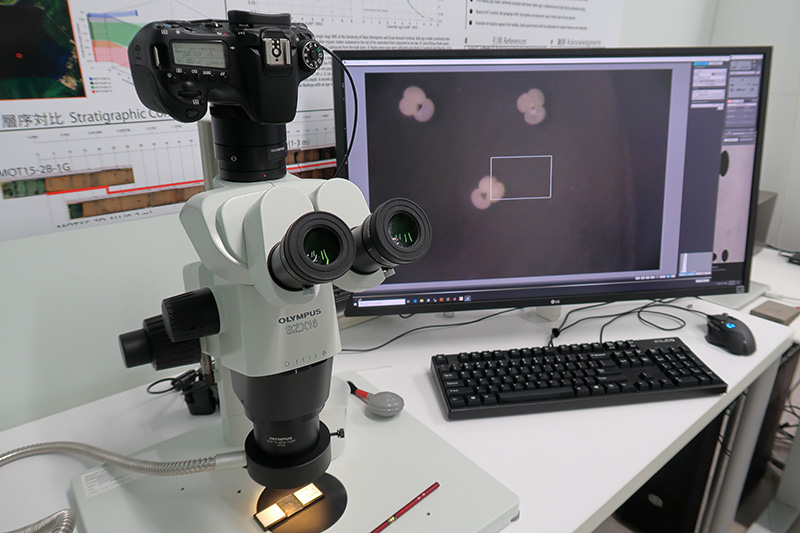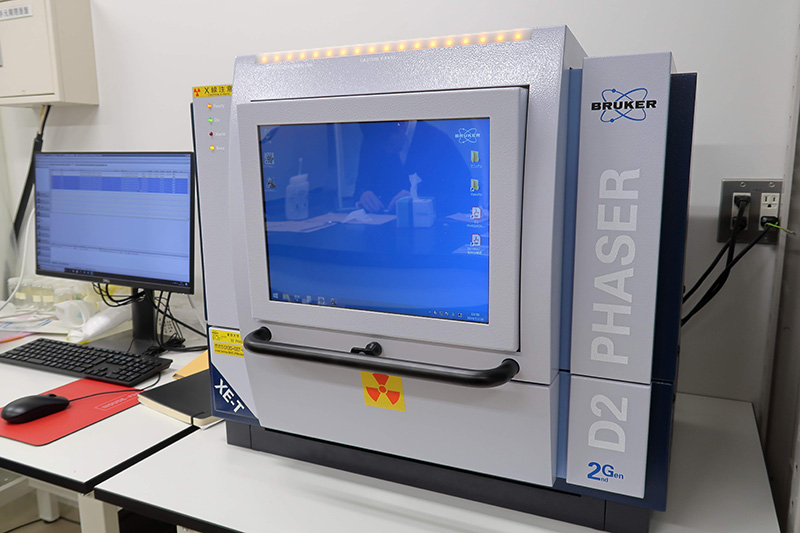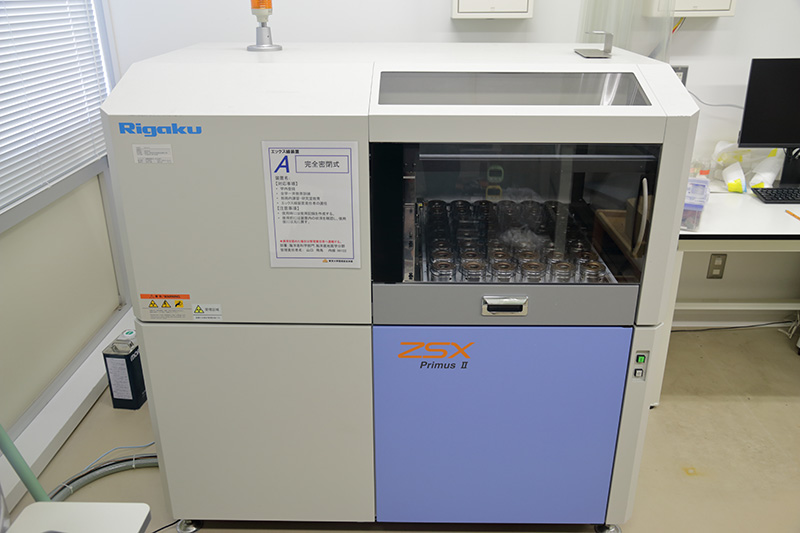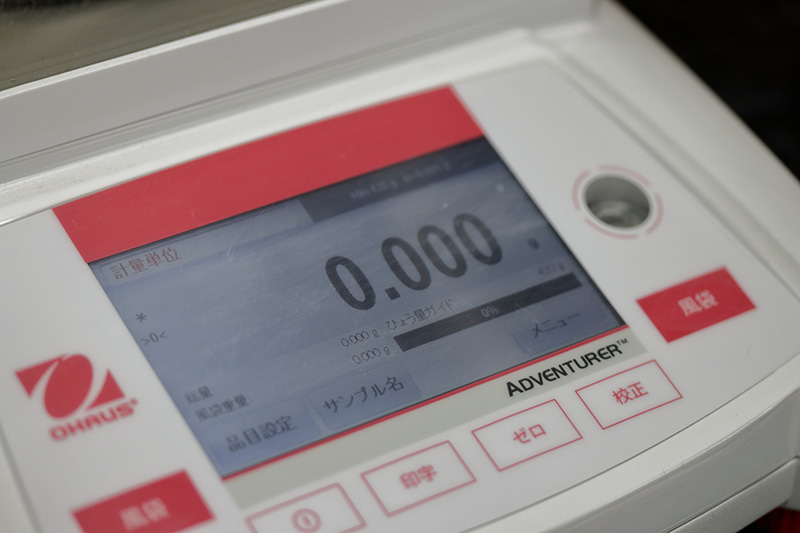Environmental Geoinformatics Laboratory
Labwork
Labwork
Learning both the basics and the state of the art

Our labwork is conducted primarily at Akita University and the University of Tokyo. Cooperative agreements with other research institutions afford student members of the Environmental Geoinformatics Laboratory the opportunity to use the facilities at other institutions, as well. Our lab employs a number of techniques, ranging from traditional sedimentological methods to state of the art, such as laser ablation inductively coupled mass spectroscopy (LA-ICP-MS). This ensures that our students understand not only the latest developments but also the fundamentals.
Students are expected to spend a significant portion of their research in the laboratory performing analyses. After being taught the appropriate methods, students and are also expected to show the ability to work independently and efficiently.
Common Laboratory Analyses
Sedimentological Analyses
 Sedimentological analyses, such as grainsize, calcium carbonate content, and total organic carbon, are fundamental techniques employed on sediment core material. When a new sediment core is obtained, we first subsample it at an appropriate interval, based on the estimated sediment accumulation rate, for the purpose of our study. Portions of the bulk subsample will be retained for other analyses, such as calcium carbonate content and X-ray diffraction, while the rest will be washed to separate the coarse >63 µm fraction from the fine <63 µm fraction.
Sedimentological analyses, such as grainsize, calcium carbonate content, and total organic carbon, are fundamental techniques employed on sediment core material. When a new sediment core is obtained, we first subsample it at an appropriate interval, based on the estimated sediment accumulation rate, for the purpose of our study. Portions of the bulk subsample will be retained for other analyses, such as calcium carbonate content and X-ray diffraction, while the rest will be washed to separate the coarse >63 µm fraction from the fine <63 µm fraction.
Micropaleontology
 Microfossils are very important to understanding past environmental change. From the assemblage present in a particular sedimentary layer, to the chemical composition of the shell, microfossils contain a tremendous amount of information. We focus in particular on geochemical analyses of planktic foraminifers to determine isotopic values and trace element content, which provides both chronological and environmental information.
Microfossils are very important to understanding past environmental change. From the assemblage present in a particular sedimentary layer, to the chemical composition of the shell, microfossils contain a tremendous amount of information. We focus in particular on geochemical analyses of planktic foraminifers to determine isotopic values and trace element content, which provides both chronological and environmental information.
X-ray Diffraction
 To understand the amount and type of minerals present in the sediments, we often perform X-ray diffraction (XRD) measurements. Along the continental slope of northeast Australia, the variations of varying calcium carbonate minerals such as calcite, high-magnesium calcite, and aragonite reflects both the long-term evolution of the environment, as well as shorter-duration, cyclic changes related to glacial-interglacial sea level cycles.
To understand the amount and type of minerals present in the sediments, we often perform X-ray diffraction (XRD) measurements. Along the continental slope of northeast Australia, the variations of varying calcium carbonate minerals such as calcite, high-magnesium calcite, and aragonite reflects both the long-term evolution of the environment, as well as shorter-duration, cyclic changes related to glacial-interglacial sea level cycles.
X-ray Fluorescence
 While XRD as described above can be used to determine the minerals present in a sample, X-ray Fluorescence (XRF) indicates the elements that are present. We use this on whole sediment cores and subsamples to determine the major components present, which can help us understand the origin of the sediment. Marine sediments particularly rich in aluminum and titanium, for example, likely contain abundant material derived from land.
While XRD as described above can be used to determine the minerals present in a sample, X-ray Fluorescence (XRF) indicates the elements that are present. We use this on whole sediment cores and subsamples to determine the major components present, which can help us understand the origin of the sediment. Marine sediments particularly rich in aluminum and titanium, for example, likely contain abundant material derived from land.
Stable Isotope Analyses
 In collaboration with Associate Professor Kotaro Shirai at the University of Tokyo Atmosphere and Ocean Research Institute, we are performing high-resolution measurements of stable oxygen and carbon isotopes on calcareous microfossils. While the information obtained from these analyses varies by geographic region, oxygen isotope ratios provide both a good indication of glacial-interglacial state, and hence also sea surface temperature and sea level.
In collaboration with Associate Professor Kotaro Shirai at the University of Tokyo Atmosphere and Ocean Research Institute, we are performing high-resolution measurements of stable oxygen and carbon isotopes on calcareous microfossils. While the information obtained from these analyses varies by geographic region, oxygen isotope ratios provide both a good indication of glacial-interglacial state, and hence also sea surface temperature and sea level.
Trace Element Analysis
 Together with Professor Yusuke Yokoyama at the University of Tokyo Atmosphere and Ocean Research Institute’s Analytical Center for Environmental Study, we are measuring trace elements of microfossil shells. The ratio of, for example, the trace element Mg relative to the major element Ca provides information on the temperature of the water in which the microfossil lived, allowing us to reconstruct changes in e.g. sea surface temperature. This in turn, combined with stable oxygen isotope analyses, provides more detailed information on the water mass in general. We are using an inductively coupled plasma mass spectrometer (ICP-MS) to perform both solution-based measurements and laser ablation (LA-ICP-MS) measurements.
Together with Professor Yusuke Yokoyama at the University of Tokyo Atmosphere and Ocean Research Institute’s Analytical Center for Environmental Study, we are measuring trace elements of microfossil shells. The ratio of, for example, the trace element Mg relative to the major element Ca provides information on the temperature of the water in which the microfossil lived, allowing us to reconstruct changes in e.g. sea surface temperature. This in turn, combined with stable oxygen isotope analyses, provides more detailed information on the water mass in general. We are using an inductively coupled plasma mass spectrometer (ICP-MS) to perform both solution-based measurements and laser ablation (LA-ICP-MS) measurements.
